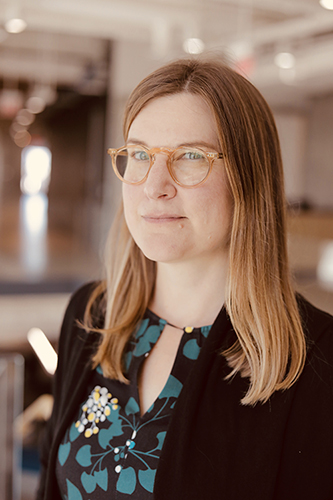Immersive AV Meets the Built Environment at TIDE 2020
A perfect paradox is currently generating demand in AV experience design: Everybody wants the same thing, but they all want something different.
Universally, designers of the built environment hope to persuade people to look up from their phones. But the thing that makes them look must be distinct, brand new — and preferably multisensory, interactive, responsive and immersive as well.
This checklist represents good news for anyone who deals in the artful and highly scientific integration of AV, lighting and control: Particularly with the proliferation of large-scale “digital landmarks” that are currently appearing in new construction and the constant renovation of nearly any space that has remained static for too long.
 LG Open Frame OLED digital signage
LG Open Frame OLED digital signage
But first, a distinction. These aren’t just video walls, and it’s not just digital signage. This is something fun and new and invigorating. This is “media architecture.” And it requires an interdisciplinary team of creative and technical people to make sure the result is memorable and captivating.
Media architecture is distinguished by its seamless integration into the built environment, often adding a layer of design interest with visual displays configured in wild shapes, sizes and aspect ratios. Further, it’s elevated from mere display to memorable moment through cultivated, multilayered content. The latter takes the form of subtle imagery and the occasional immersive audio element, all generated by specialized media platforms, APIs and the occasional buzzworthy AI component.
The key to success in these media architecture implementations is a slight inverse of the way many AV projects are accomplished. Where often the gear is installed and then decisions about content are made, with media architecture, explains Gideon D’Arcangelo, Associate Principal with Arup, “You design the content at the same time as you design the technology.”
Zooming out further, you design the space at the same time as you design the content and the technology — treating the combination of the latter as architectural material: “What we're trying to do is move away from AV as applied to the wall, to a place where the media is the wall.”
Taking that approach has shifted the conversation about how and where audiovisual components are going to fit in a space. Now the design collaboration starts early, especially as experience designers continue to seek new ways to create something fresh and different.
 Scenico flexible LED screen installation
Scenico flexible LED screen installation
“AV integration has a critical core, instrumental role in media architecture, without a doubt,” D’Arcangelo states. “Really, the main partner of a firm that’s designing media architecture is your AV integrator. And during design, there can really be a great back and forth from the engineering and integration side that can make the results much stronger.”
Thinking about how customized content might influence the shape of an AV installation, or vice versa, is one area where experience designers rely most heavily on AV integration specialists. “AV integrators know what's possible with a piece of technology, and I really need that,” notes Nathan Adkisson, Director of Strategy and Associate Creative Director with Local Projects.
Even if an integrator is bringing something new that may not have a distinct purpose yet, that brings value to the design discussion. “Just saying here's a thing that wasn't possible before, but now it’s possible,” Adkisson says, opens up the process. With knowledge of new hardware and software options in mind, he explains, “I will think through all the interesting, compelling stories that are part of the brief that I have. And my job is to match them up with the piece of technology, or in some cases, something that's not technology at all that does the best job of turning that story into an experience.”Ultimately, it’s in that most contemporary version of storytelling where AV, experience design and media architecture meet. And the elements that we find most compelling in these new ways of adding content to the built environment are actually the same core elements of the AV business itself. It’s always been about creating something evocative that fosters connections with audiences.
This connection between the AV practice and the emerging field of media architecture is what we will be exploring at the TIDE Conference during InfoComm 2020. This year we’ve created a new half-day program focused on the collaborative ties between media architecture and AV installation.
 TIDE Conference digital signage
TIDE Conference digital signage
On stage at this TIDE, leading experiential designers will explore the creative and technical inner workings of how these eye-catching installations are realized. The TIDE program is designed as a creative process in itself, with a series of discussions that incorporate audience input and explore what is possible in these new collaborations.
Just like an architectural media project, the TIDE event will connect content with the space and the audience within it. And the conversations that happen will be the new and different thing that we’re all seeking.




.jpg?sfvrsn=3d19e700_3)

